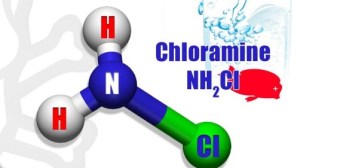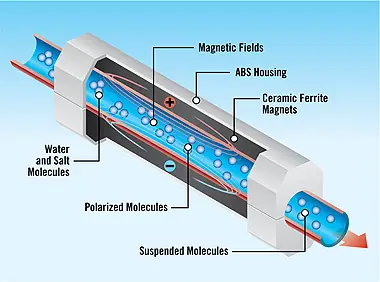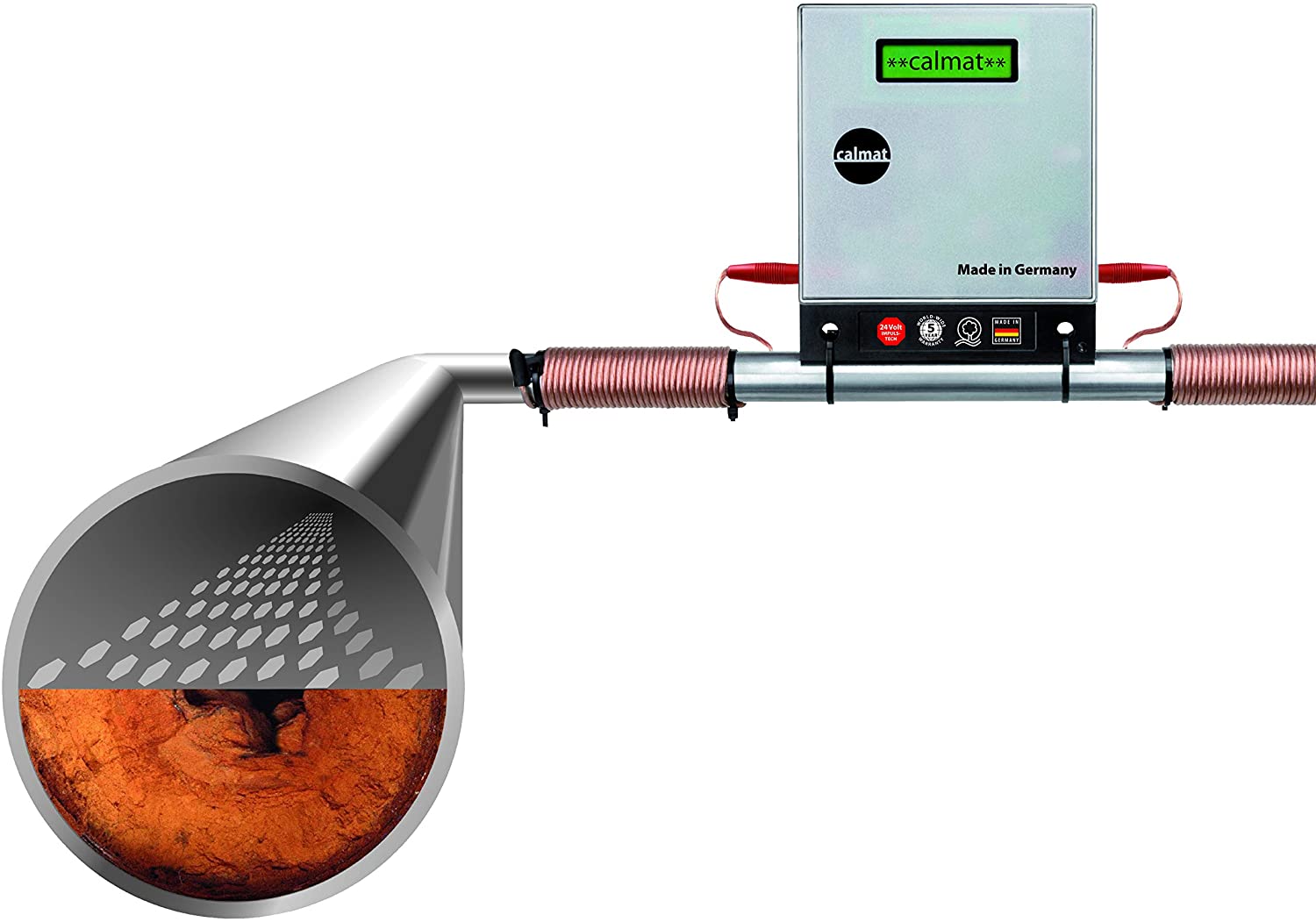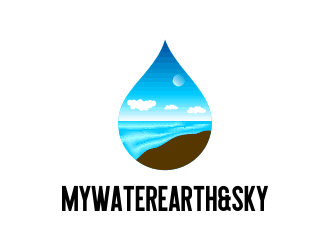Does your skin seems irritated may be itchy and red after a shower or does your Showerhead has scale and residue that may even be clogging the holes in the head and the soaps and shampoo that you are using won’t lather up? Do you smell Chlorine when you are running the hot water? These problems could be associated with Water Hardness and Chlorine Residual that some manufacturers claim can be removed by filters installed in your showerhead. Do Shower Filters Work?
Shower Head Filters using Carbon/KDF media can deplete Chlorine residual, making it feel better & less harsh. Chlorine, a known carcinogenic is bad for skin & hair but Shower Head Filters do little to soften Hardness in H2O because of the little time of contact it has with media through the filter.
Shower Head Filters use a technical process. That would take some time and contact with the filter’s media. Filtering through a Showerhead Filter within seconds might be too much to ask. Other ways of doing it like some ways mentioned here might be better:
- Running water supply through a Whole House (RO) Filter called Reverse Osmosis
- Use a regular Water Softener with Salt or an alternative
- Redox-Magnetic-Electronic or Conditioning Technology
Shower Filter Benefits
With folks paying more attention to their health and becoming more knowledgeable about how to do that these days, water becomes an important topic. This time it’s water we use in the shower every day and how that could be harmful to us. Not to beat up the Municipal water companies, but the use of chlorine is always suspect.
Because of our daily use of showers and how the shower is delivered by separating chlorine in aerosol form, there are questions on how it’s affecting our body. There are some Shower Filter Benefits.
There are noticeable effects when people take long showers. Chlorine has a drying effect on Hair & Skin. It can affect eczema or dermatitis, which can cause the skin to become inflamed (irritated), blistered, dry, thickened, and cracked. Your hair and skin have natural oils that provide protection from dryness and other damage. By keeping those protective oils balanced your hair and skin will look and feel better. Then there are chemicals and contaminants that find their way through the Water System. Some Symptoms of Over-Exposure to Chlorine in your Shower can be:
- Dry Hair
Chlorinated water interferes with your scalp’s natural moisturizing process, so it can dry out your hair–making it brittle. - Ineffective Hair Dye
Chlorinated water can impact the effectiveness of your hair dye, as it expedites fading. - Dandruff
Chlorinated water increases the amount of dandruff you have because it dries out your scalp, leading to increased skin particle flaking. - Hair Loss
Hair tends to be more fragile when it’s dry, so chlorinated water can both cause and accelerate hair loss.
Chlorinated tap water has low concentrations of chlorine to guarantee that your water can disinfect and prevent waterborne diseases once it’s left the treatment plant or your well. This keeps your tap water safe in the pipes on the way to your tap. Chlorine remains the most efficient overall way for water used in your home to be disaffected.
There are some known side effects to using it. Because of the aging infrastructure we use that was built almost a century ago the pipes that carry clean water to your community are slowly affected by the Chlorine that is added to the system. The removal of some Chlorine by the Shower Head Filters can make some difference, how much is the question.
Chloramine Shower Filter
More serious Unknowns are invisible but are discovered more every day and talked about in the world of water filtration. Chlorine residual mixed with other elements can create Carcinogenic By-Products that have to know to be dangerous for a long time.
Organic matter mixed with Chlorine and other contaminants creates reactions that can result in the formation of Halogenated Chemicals known as disinfection byproducts (DBPs). Many halogenated compounds are known carcinogens, so they rightfully receive quite a bit of scrutiny when found in tap water. Removing any of these unknown chlorine by-products is worth it and should be taken seriously but how much can they remove is the question.
Some of these serious common By-Products of Disinfection are 1000’s times more dangerous than Chlorine and include:
- Trihalomethanes (THM)
- Haloacetic acids (HAA)
- Bromate
- Chlorite, Chlorate
We already know that Carbon used in filters removes Chlorine residual and other contaminants from entering your body through your Drinking Water. How about through Absorption?
- Can these contaminants like Heavy Metals enter your body through your skin?
- Can Hot temperatures and aerosols that are created in a shower enter your lungs and create another way of absorbing contaminants?
- How bad is Chlorine for your body’s health?
- Is there a Better Way?
In order to limit DBPs, some United States water systems are making the move toward using chloramine  as a disinfectant and this is being used by American Water Treatment Facilities more and more each day. Chloramine has been tested and deemed safer for disinfection than chlorine for this purpose thanks to its tendency to produce fewer by-products. However, while millions of American homes now receive chloramine-treated water, chlorine still remains the highest disinfection used in American water supplies.
as a disinfectant and this is being used by American Water Treatment Facilities more and more each day. Chloramine has been tested and deemed safer for disinfection than chlorine for this purpose thanks to its tendency to produce fewer by-products. However, while millions of American homes now receive chloramine-treated water, chlorine still remains the highest disinfection used in American water supplies.
To remove chloramine, you need to have an extensive carbon filter. This will remove the chlorine included in the chloramine molecule. Then, you must perform a reverse osmosis technique or a cation filter. As such, the ammonia content can be eliminated. This ain’t happening in a Shower Filter or Carbon Filter that takes a little time to rid the chemical out of the solution. The longer the contact the more efficient the removal.
Water treatment facilities are moving into the future using Chloramines, which are disinfectant compounds made from the combination of chlorine and ammonia. Chloramines are now preferred because they will last longer once used as a disinfectant. This makes them more effective in killing organic and biological contaminants. Then there is the problem with eventually getting rid of the Chloramines you added. This will be something that will need to be addressed in the near future as more and more Water treatment plants use Chloramines over Chlorine and other forms for disinfection.
Do Shower Head Filters Help With Hard Water
Hard water is merely water that has a high concentration of dissolved minerals, specifically Magnesium and Calcium. The concentration of the dissolved minerals determines what the level of hardness is. Some areas can have harder hard water more so than other regions and as a result, will have different characteristics throughout the Country and the World. Hard Water is drinkable and safe but might not be as pleasant to drink or bath and shower in if the level of Hardness is too high.
With hard water’s high concentration of magnesium, calcium, and other natural minerals, it can be a good or bad thing and even recommended as a dietary supplement in the event that you are not already receiving enough of one of those minerals.
So you need a certain number of minerals to maintain a healthy body. Private Well water sources can cause problems that cause scale and corrosion and what’s called Limescale which will clog up pipes, water heaters, and radiators making it necessary to clean out showerheads and faucets.
With Soft Water the opposite is true, it’s better for cleaning and drinking. Soft water is better for clothes, dish cleaning, and lathering soap up. Another problem with not enough minerals in your water which makes water Soft is that old pipes and solders in your home can be made of lead. This lead can be dissolved by the Soft water to a point where it becomes a danger because people in the home can absorb this very toxic heavy metal over periods of time
The shower filter will not soften water at least in the way a traditional softener does, by adding salt, but it will remove chlorine and small amounts of chemical contaminants, making the water a little less harsh and leaving your skin and hair feeling significantly softer.
There are Showerhead Filters that make claims about removing Chlorine and softening Hard Water at the Showerhead. Gives you both benefits of Chlorine removal and Softer Water. But…Let’s look at how the process of Water Softening works and how much time is involved with it.
How Do Salt Water Softeners Work
Calcium and Magnesium along with other Metal Cations are removed from the water by changing the charges of their Ions. The calcium and magnesium ions in the water carry positive charges. The water softener pushes the water through a tank filled with negatively charged beads. As the water passes through the tank, the positive calcium and magnesium ions will cling to the beads instead of floating through in the water. The beads trade them with similarly charged elements. The chosen element is sodium. Sodium ions are positively charged. This typical process looks like this:
- The hard water enters the mineral tank
- The magnesium and calcium ions cling to the beads and displace the sodium ions.
- The sodium ions go in the water instead of the calcium and magnesium
- The water softener starts its regenerating cycle
- The water flow is reversed to clean the water tank
- The brine solution enters the mineral tank
- The sodium ions replace the magnesium and calcium ions on the beads
- The calcium and magnesium ions are flushed down the drain
- The mineral tank is flushed with the brine solution
- The brine tank is refilled.
- The process is now ready to start again.
This time-consuming process could never take place in a Showerhead. There is way too much going on including recharging the beads or the Media. There are some less efficient alternative ways of making the water softer that are used with Shower Filters use in their systems that are inexpensive compared to the systems normally used in homes and for good reason.
Some Showerhead Filters use Carbon media along with KDF media that claim to remove Chlorine and soften the water in the shower and can alleviate some of the problems associated with Hardness and Residual Chlorine.
KDF Shower Filter
The KDF media is made from 55% Zinc and 45% Copper is expensive to use and has been around for a while. It’s been used in Water Softners but there have been problems with the weight of the media, especially during backwashing procedures. Manufacturers have been using KDF in combination with Carbon Water Filter/Water Softners applications with some success for a number of years in bigger type vessels like whole house Water Softeners. The Medium works by a chemical process called ‘Redox’.
According to some manufacturers who make Showerhead Water Filters, it is possible to remove Chlorine residual in the showerhead along with heavy metals using a dual media Carbon Block along with just 2 ounces of KDF Media. A Shower Filter is primarily designed to reduce chlorine. Some Shower filters include a stage with KDF-55 media, and according to the KDF website the filter is designed to reduce chlorine, water-soluble heavy metals, and scale.
KDF-85 media can be ideal for well water. The process is explained like this: KDF Fluid Treatment’s unique combination of copper and zinc creates an electrochemical reaction. During this reaction, electrons are transferred between molecules, and new elements are created. Some harmful contaminants are changed into harmless components. Free chlorine, for instance, is changed into benign, water-soluble chloride, which is then carried harmlessly through the water supply. Similarly, some heavy metals such as copper, lead, mercury, and others, react to plate out onto the medium’s surface, thus being effectively removed from the water supply.
KDF process media are completely safe. KDF media meet EPA and Food and Drug Administration standards for levels of zinc and copper in potable water, so the process is not toxic and does not cause any adverse side effects. KDF media are certified by the NSF Standard 61 and Standard 42. The Patented KDF process media consist of high-purity copper-zinc formulations. These substances exchange electrons or bond with chlorine and other metals contained in the water to create harmless substances.
KDF Process Media are used in a variety of pretreatment, primary treatment, and industrial applications. They are generally used in place of, or in conjunction with, granular activated carbon filters, even carbon block or inline filters. KDF Process Media extends the life of granular activated carbon (GAC) while protecting the carbon bed against fouling by bacterial growth.
 Benefits of KDF Process Media
Benefits of KDF Process Media
- Significantly extend the life of granular activated carbon
- Are recyclable
- Effectively remove chlorine and heavy metals and control microorganisms
- Are available in four granular styles, each designed for a specific need
- Outperform silver-impregnated carbon
- Require no EPA registration, thus less red tape
Types Of Water Softeners
In the same family as the KDF medium is a media called Chlorgon that works on a similar principle to a Catalytic Converter in an automobile. In shower filtration, free chlorine is converted into a harmless chloride. The scientific name for this chemical reaction is known as “Reduction-Oxidation”, commonly referred to as Redox. During this complicated reaction, electrons are transferred between molecules and create new elements during this process.
When free chlorine from the water in your shower comes in contact with the KDF or Chlorgon media, it is changed into a harmless water-soluble chloride. This reaction changes free chlorine to a larger chloride element. Too large to evaporate or be absorbed by the skin. It is then carried harmlessly through the water supply. The media are both recycled and use no chemicals which makes this product for use in Hospitals, restaurants, and water treatment industries that rely on purity in the water process.
The best way of combating these types of problems is to use a Whole House RO system(Reversed Osmosis) with prefilters that can be manually cleaned without taking the system offline. Metals like Rust salts, scale, rust, and sediments along with Magnesium and Calcium are removed making the water softened and the extremely small pores that are built into the RO system will remove the smallest of contaminants. An inexpensive Filter using Carbon Media will remove dissolved chemicals in the water like chlorine, herbicides, and pesticides.
Doing away with the need of:
- Shower Filters
- Kitchen and Bathroom Faucets
- Garden Hoses
- Inline Refrigerator & Washer Filters
- All Point-of-Entry Water Filters
Even the most expensive and highest quality Reverse Osmosis systems will not work well or operate for very long without Carbon Block & proper Pretreatment Filters. In city water, this usually means removing the chlorine and chloramine as well as preventing scaling of the membranes with either a water softener or an antiscalant. Most Professionals agree that an antiscalant system is preferred because it’s more economical and you don’t have to mess with heavy salt bags. On well water, it can mean removing iron, sulfur, and manganese as well.
If you are concerned with chlorine, chloramine, arsenic, THM, PCB, TCE, Chromium 6, PFOA, PFOS, lead, fluoride, heavy metals, and hundreds of other contaminants, a whole-house RO system may be the solution. There is no better water treatment for a concerned consumer than installing a Reverse Osmosis along with the Carbon Block system. More than any other kind of process. These are some optional ways of removing Hardness
How good is the Renogy Tactical compared to the Katadyn Pocket Water Filter?
Katadyn Pocket Filter
More Capacity
A Sediment Filter
Processed Output
Uses a Silver coated media
A Cleanable Filter
Renogy Tactical Microfilter:
Price 100’s of dollars cheaper
Renogy uses a 0.1 Micron size which is the smallest used today
Inexpensive Filter Replacement $10.00
Durable Aluminum Construction ..……………………………………………………………………………. Read more

Magnetic water conditioners are not exactly water softeners, but they can reduce the effects of hard water. In fact, these might be exactly the units you should be looking for if your water source is not very hard. They are inexpensive but have questionable results and mixed reviews. They have a marginal effect on softening water. You get what you pay for.
The magnetic water softener is also known as Anti-scale Magnetic Treatment or AMT and is considered to be a “safer” alternative to water softening because it doesn’t use chemicals. If you live in a hard water area and suffer from limescale on sinks, faucets, and showers? This is because your water supply contains dissolved magnesium, calcium, and manganese compounds which appear as troublesome limescale.
These units can be attached to the waterline, and they produce a magnetic field. When the hard water passes through the magnetic field, the impurities and salts in the water will change their behavior. As a result, instead of sticking together and attaching them to the pipes and appliances in your home, the calcium and magnesium molecules will still be present in the water, but they will flow freely down the drain. The jury has been out on these guys for a long time time.
What is the Best Way to Filter Well Water?
Use a Whole House Water Filtration system that contains:
- Pre-Filter Sediment Removal
- Water Softener
- Carbon Filter (kills Bacteria)
- Pre-micro-sediment
- Reverse Osmosis-(Dissolved Contaminants to .01 microns in size)
- Polishing-Coconut Fiber-UV treatment (kills Virus & Cyst)
- Minerals-added that were stripped ………………………………………………………………………. Read more
Electronic Water Descalers are more dependable and are proven to work but are more expensive. The Calmat 1-6004-000USA Water Conditioner, Translucent, and black sold here through Amazon –  the Calmat offers considerable savings in washing and cleaning agents and protects against lime-scale deposits on showerheads, sinks, and faucets. The Calmat exclusive Electric-Impulse-Technology is based on the principle of physical water treatment; changing the crystallization process of the liquid calcium and this way the hard scale loses its adhesive power.
the Calmat offers considerable savings in washing and cleaning agents and protects against lime-scale deposits on showerheads, sinks, and faucets. The Calmat exclusive Electric-Impulse-Technology is based on the principle of physical water treatment; changing the crystallization process of the liquid calcium and this way the hard scale loses its adhesive power.
Calmat works independently from the water velocity like other systems that use magnetic fields do. Calmat is suitable for all pipe materials. Calmat is a solution that protects the piping system and appliances against scale deposits and rust removing existing deposits. Calmat prolongs the lifespan of household appliances; less time and money is spent on repairs and maintenance in your home.
So if you don’t want to use Salt or Chemicals for more money you can try these Electronic Water Descalers that have a proven track record for preventing building upscale and have the advantage of easy installation.
Chelation Technology- which is what typically causes scale and hard-water deposits. Chelation is a Conditioning technology that uses a chelating agent (such as citric acid or EDTA) to tie up hardness ions, making them unable to form scale on fixtures and appliances. This technology may prevent scale buildup by up to 99% and may also remove the existing scale. Chelation has not been well proven, especially for higher hardness levels (> 8-10 gpg), or if iron, dissolved oxygen, or dissolved silica are present.
The agents found in this technology can stop the mineral ions found in Hard Water by separating the minerals so that they freely wash away through pipes, dishes, appliances, and more importantly off your skin and hair keeping them from collecting. The main ingredient used is Citric acid a weak organic acid that occurs naturally in many fruits and vegetables, commonly lemons, limes, and oranges. It is a natural chelate and preservative, and it is used in many foods and soft drinks.
As the use of Catalytic Carbon grows, this type of Carbon has a surface structure that has been altered from standard activated carbon enabling it to remove chloramines and other contaminates removing more with less contact time. Without getting too complex, Catalytic Carbon is a supertype Carbon. Does what a Standard Activated Carbon does with a smaller amount of contact time. This makes this type of Carbon perfect for smaller type filters, like Showerhead Filters.
Water testing over (180 mg/l or ppm) is considered extremely hard can test it a few times and get some fairly accurate results. That way you won’t have to rely on anyone. There are visual signs to look for along with taste, Scale build-up in plumbing systems, including pipes, faucets, appliances, and water heaters. High soap and detergent usage and stiffer dingy clothes.
Do Shower Head Filters really do what they say they do? I would go back to my first answer. They may not have the time to do what they claim. There are many ways to deal with Chlorine removal and Softening water. If you are concerned about it, then a Whole House Water Filtration System with an added Water Softener would be the answer.
What is this Brita Faucet Filter’s Milky Water Mystery?
When the Brita Faucet Filter is put on its by-pass, H2O runs through 2 aerators in the system that saturate the water with dissolved oxygen; the Colder the H2O, the more oxygen it holds. With added colder seasonal temperatures, the water creates white cloudiness that is oxygen trapped in the solution .………………………………………………………………. Read more
References:
Healthline–What Are the Risks and Benefits of Drinking Cold Water?
KDF water Treatment–Solutions for economical clean water.™
Pure Water Gazette Water Treatment Issues-Chloramines in Drinking Water
JimGalloway/Author/Editor


